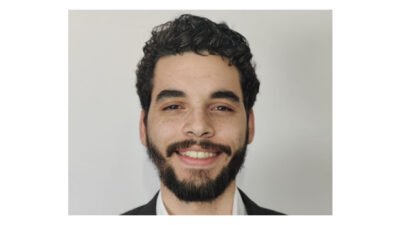New level sensing technology is said to offer a cost-effective way to accurately measure liquid levels without the need for calibration across a large number of fluids. Suzanne Gill, Control Engineering Europe, spoke to the principal engineer involved in its development by Cambridge Consultants.

Dr. Temoc Rodriguez, principal engineer at Cambridge Consultants, was surprised to discover there was still a need for innovation for a device that employed a relatively simple concept. "We see a significant demand for adaptable technology, in everything from consumer appliances and medical instruments to agricultural and large-scale industrial containers," he said.
The Fringe Effect Level Transducer (FELT) has been developed to offer a better way to monitor the level of a wide variety of fluids. FELT has no moving parts and is immune to temperature change. It is robust and is not affected by external interference such as metal objects, people, or electrical noise.
Part of the criteria for the product design was to affordably and accurately eliminate a range of common problems encountered with existing level sensing technologies, and provide a continuous measurement of the liquid level. FELT consists of three parallel low-cost, simple, and customizable electrodes—one measurement electrode, one reference electrode, and a common electrode. There is no direct contact between the electrodes and the fluid being measured. An electric field is applied to the electrodes to measure the ratio of the electric charge between the measurement and reference electrodes and, as a result, a continuously accurate liquid level can be determined.
"We found that existing fluid measurement technologies that can achieve similar accuracies tend to use radar or ultrasonics and are very costly. Cheaper devices have accuracy issues and use probes that require careful calibration," said Dr. Rodriguez. The FELT probe and electronics are calibrated at factory using average statistical data across a number of fluids with high dielectric constant. This is said to result in an accuracy of better than 5% across fluids and temperature. Calibration of the probe for a known application fluid can improve accuracy to 2%.
Going into more depth about the technology, Dr. Rodriguez said: “FELT is an immersion transducer that works on the principles of fringe electric fields between electrodes which propagate through the liquid. A time varying electric field is applied to the electrodes of the probe, resulting in a current flowing between the electrodes which can be measured. These currents are proportional to the intensity of the electric field. As the fluid level rises around the transducer, the current increases, and this can be measured.”
The FELT design is unique in that it incorporates a reference sensor and a measurement sensor in the same probe, which can compensate for variations in the fluid. Because the measurement is directly linked to the dielectric constant of fluid, that dielectric constant typically changes with temperature or the composition of the fluid, which could upset the measurements,” continued Dr. Rodriguez. “There are some off-the-shelf technologies that use the same principles, and these can give erroneous readings when the fluid changes. We overcame this problem by adding a reference sensor into the system. Taking a ratio between the measurement electrode and the reference electrode cancels out the dielectric constant of the fluid, which means that if this changes, as a result of temperature variations or fluid composition changes, it will not affect the level measurement.
“Although the standard polypropylene casings of the probe can be affected by the properties or composition of the fluid being measured, it is possible to customize the probe body for different application fluids,” said Dr. Rodriguez.
In some applications, fluid composition or temperature may change. However, this will not affect the level measurement. Dr. Rodriguez offered an example: “We initially designed the sensor for use in a water-based solution that was being dispensed to a water tank, going from an ambient temperature of around 15 C to around 80 C. The original capacitive sensors used by the client would give different results, depending on the temperature of the fluid. The FELT design is able to take the measurements correctly, despite the temperature changes.”
The target market for the probe is for use in vessels of up to 1m in depth with a span of between 100 mm and 1 m. “This is because of the geometry of the probe and the way we measure the electric fields,” said Dr. Rodriguez. It could provide a solution for equipment instrumentation that requires continuous level sensing at an affordable cost. Example applications are machines that need to dispense a known volume of fluid into a vessel or machines that need to control a fixed level in a vessel for operational performance.
Route to market
“We hope to see the product coming to market within 6 months,” said Dr. Rodriguez. “We have a working prototype which was demonstrated at the Hannover Fair this year, where we were able to identify a number of potential new application areas.”
Cambridge Consultants is currently in discussion with a level transducer company to accelerate route to market. An alternative route to market is through customization for integrated assemblies. Because FELT offers a product platform that can be customized to address specific requirements, the sensing electrodes could become an integral part of the equipment construction. The electrodes could, for example, be printed onto a vessel wall with conductive ink, or could be part of a flexible printed circuit board that conforms to a specific vessel shape. Another potential route to market, therefore, could be through licensing parts of the design to meet specific original equipment manufacturer (OEM) requirements to improve the sensitivity, or cost, of a system.
– Suzanne Gill is editor of Control Engineering Europe. This article originally appeared at www.controlengeurope.com and was edited for the Control Engineering International pages in the November 2013 North American edition of Control Engineering. Edited by Mark T. Hoske, content manager, CFE Media, Control Engineering, [email protected].
Consider this
Avoiding recalibration when liquids or processes change may be the key advantage of a new level sensor.
ONLINE
See the article on Control Engineering Europe’s website.
International Editions has other global coverage from Control Engineering International editions.
See more Control Engineering process sensing coverage
See related articles below.



